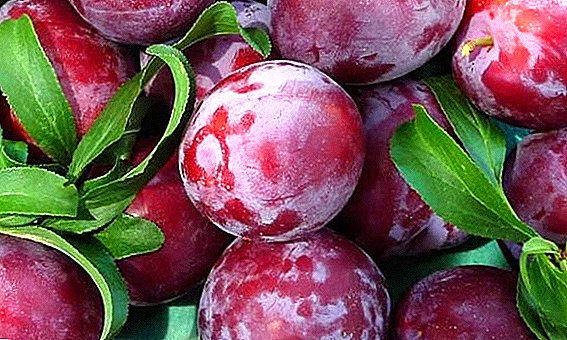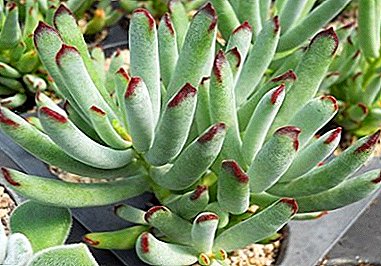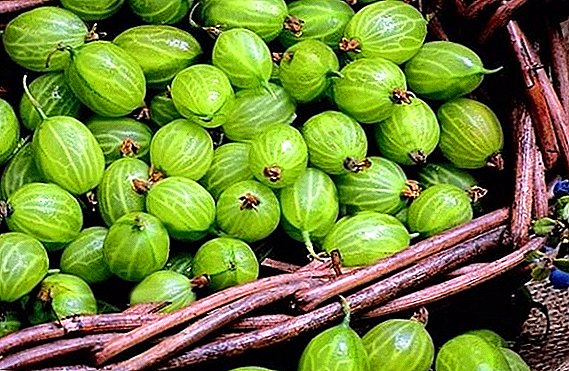 Not everyone knows about the benefits and many ways to use gooseberries, but this berry is a tasty ingredient for dishes, natural medicine and raw materials for natural cosmetics.
Not everyone knows about the benefits and many ways to use gooseberries, but this berry is a tasty ingredient for dishes, natural medicine and raw materials for natural cosmetics.
The chemical composition of the "northern grapes"
Gooseberry, which is also called "agrus" and "northern grapes", belongs to the genus Smorodina. It contains 84.7 g of water, 9.1 g of carbohydrates, 3.4 g of dietary fiber, 1.3 g of organic acids, 0.7 g of proteins, 0.2 g of fats per 100 g of berries. Calorie gooseberry - 44 calories.
Fruits contain the following substances:
- Trace elements: potassium, calcium, magnesium, sodium, sulfur, phosphorus, chlorine.
- Macroelements: iron, iodine, manganese, copper, molybdenum, nickel, fluorine, chromium, zinc.
- Vitamins: A, beta-carotene, group B, C, E, PP.
The most high-calorie and beneficial part of the fruit is the skin.

Did you know? Gooseberry appeared in Kievan Rus in the XI century. The Ukrainian name "agrus" was adopted in the XV-XVI centuries. through the Polish agrest ("sour wine from unripe grapes") from Italian agresto- "unripe grapes". The plant and other Slavic peoples are called by a similar word: Belarusians - “agrest”, Serbs and Croats - “Ogrozd”, Czechs - “Agresht”, Slovaks - “Egresh”. For Bulgarians, the name sounds like "tzarigradsko grazde" (tzaregrad grapes).
When gooseberries are used, the healing properties of the plant
The list of medicinal properties of gooseberry is quite wide, due to its rich chemical composition.
Berries are recommended for people with hypertension. Gooseberry helps to normalize blood pressure and strengthens the walls of blood vessels. It also helps to cope with hypovitaminosis, lack of iron, copper and phosphorus in the body.
 Due to its choleretic and diuretic properties, the gooseberry is useful in liver and biliary tract diseases, inflammation of the kidneys and bladder. As an analgesic and laxative agent for diseases of the gastrointestinal tract, gooseberry decoction is used (from a tablespoon of fruit and a glass of water, pre-filtered and cooled, the rate of consumption is 1 serving 4 times a day).
Due to its choleretic and diuretic properties, the gooseberry is useful in liver and biliary tract diseases, inflammation of the kidneys and bladder. As an analgesic and laxative agent for diseases of the gastrointestinal tract, gooseberry decoction is used (from a tablespoon of fruit and a glass of water, pre-filtered and cooled, the rate of consumption is 1 serving 4 times a day).
Gooseberry juice, thanks to pectin, helps to remove radionuclides and salts of heavy metals from the body, so it is useful for people affected by radiation.
Not only fruits, but also gooseberry leaves also have their beneficial properties and contraindications. They make broths and healing infusions. These drugs are used to prevent anemia, normalize digestion, improve blood circulation and strengthen blood vessels, and treat urolithiasis. However, excessive consumption of gooseberry leaves decoction can lead to dehydration, slower metabolism and loss of valuable vitamins.
Important! If you pour 2 tablespoons of dried gooseberry leaves and 2 tablespoons of tea with boiling water, add a slice of lemon, mint, cinnamon, sugar or honey, you can get a delicious tonic drink.
Gooseberry and weight loss, as used by gooseberry in dietetics
 Gooseberry is a very valuable product in dietetics due to its low calorie content, the presence of minerals and vitamins. It is useful to use with impaired metabolic process for people with excess weight.
Gooseberry is a very valuable product in dietetics due to its low calorie content, the presence of minerals and vitamins. It is useful to use with impaired metabolic process for people with excess weight.
In the treatment of obesity for several weeks consume a large number of berries, limiting the total caloric content of food.
Molybdenum contained in berries is necessary for the formation of hemoglobin and the exchange of amino acids, which is very important during the period of rapid build-up of muscle mass and at the first signs of anemia.
Compote, jam, marshmallow, jelly, jelly, pies, salads, seasonings, wine, sweet and sour sauce and marinade for meat and fish are made from the berries. Among the many recipes for jam and dietary - with sweeteners instead of sugar, citrus, fruit and nuts.
Did you know? The most delicious and difficult form of gooseberry jam is “royal jam”. For its preparation, green berries must be cleared of seeds and boiled in water with cherry leaves, thereby preserving the beautiful emerald or amber color of jam.
Cosmetic gooseberry recipes
 Today, many prefer natural remedies rather than chemical cosmetics, so the gooseberry can be very useful for women in caring for themselves. Organic acids contained in it deeply clean the pores, retinol restores damaged cells, ascorbic acid improves the metabolic processes and eliminates inflammation, potassium regulates the level of hydration.
Today, many prefer natural remedies rather than chemical cosmetics, so the gooseberry can be very useful for women in caring for themselves. Organic acids contained in it deeply clean the pores, retinol restores damaged cells, ascorbic acid improves the metabolic processes and eliminates inflammation, potassium regulates the level of hydration.
From half a glass of freshly squeezed juice of ripe gooseberries and a teaspoon of glycerin, you can make a tonic lotion to moisturize and soften the skin of the face and neck.
Lotion for oily skin consists of 2 tablespoons of mashed berries, 100 ml of warm water and 1 tbsp. spoons of alcohol (berries fill with water, stir, after half an hour, strain and add alcohol).
To make masks, mix a spoonful of crushed gooseberry berries with other ingredients:
- anti-flaking: with a spoon of olive oil;
- for problem skin against inflammation: with half a spoonful of blue clay;
- to cleanse oily skin: with a spoon of starch and a pinch of soda;
- for combination skin: with 2 spoons of yogurt;
- for nourishing dry skin: with a spoon of dairy products (sour cream, cottage cheese, cream) or yolk and a spoon of butter.
Masks with juice and gooseberry pulp make for hair. On sale you can also find dry powder of Indian gooseberry, which must be diluted with water to a paste and applied to hair for 15 minutes. This mask makes hair strong, thick and shiny.
Important! In order to avoid an allergic reaction of the skin to the mask, it is necessary to test it on the inside of the wrist or elbow before use. You can not use a mask if there are wounds on the face.
Gooseberry - an indispensable product for pregnant women
 Pregnant women just need to know how the gooseberry is useful for their bodies. After all, it can help reduce the suffering from toxemia. The berry does not have a pronounced smell, provoking nausea, and its taste is necessarily present sour - what future mothers prefer to eat. Gooseberry juice diluted with water will help to cope with the problem of facial pigmentation, if you wipe the skin areas with it.
Pregnant women just need to know how the gooseberry is useful for their bodies. After all, it can help reduce the suffering from toxemia. The berry does not have a pronounced smell, provoking nausea, and its taste is necessarily present sour - what future mothers prefer to eat. Gooseberry juice diluted with water will help to cope with the problem of facial pigmentation, if you wipe the skin areas with it.
The berries contain many healthy substances for mother and baby. Iron increases blood hemoglobin levels and prevents the development of anemia. Gooseberry helps the woman's body to cope with additional loads: removes excess fluid, reducing swelling, promotes the work of the kidneys, stimulates blood circulation, has a diuretic and laxative effect, strengthens the immune system.
Important! Eating berries in large quantities can be harmful to a pregnant woman due to the content of mineral acids. Also, do not forget about the incompatibility of gooseberry with some products.
The harm of gooseberry, contraindications for eating fruits
Gooseberry berries, in addition to useful properties, have harmful qualities. When consuming them, you should be aware of some limitations and contraindications.
 It is better not to eat it with individual intolerance, diseases of the stomach and intestines (heartburn, gastric ulcer, colitis, enteritis). In diarrhea, the laxative effect of the gooseberry can lead to additional dehydration and remove beneficial substances from the body.
It is better not to eat it with individual intolerance, diseases of the stomach and intestines (heartburn, gastric ulcer, colitis, enteritis). In diarrhea, the laxative effect of the gooseberry can lead to additional dehydration and remove beneficial substances from the body.
Gooseberry bushes are often treated with pesticides, therefore, in order to avoid poisoning, the berries should be washed.
Gooseberries can not be eaten in combination with plums, yogurt and yogurt, it can cause indigestion.
Such a useful berry like gooseberries must be included in your diet. Moreover, they can be enjoyed all year round, if you make blanks or freeze.












